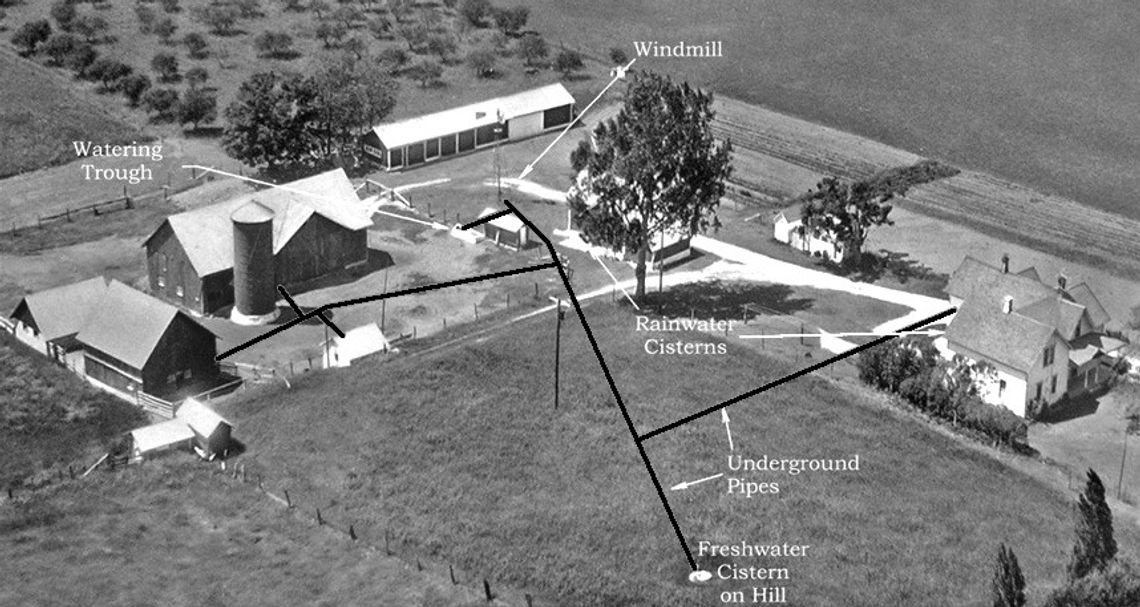This week we continue marking the recent passing of Port Oneida/Glen Arbor favorite son Leonard Thoreson with a series based on him and his home farm along Thoreson Road. Leonard contributed many hours of oral history interviews and a family photograph collection—all now preserved in the Preserve Historic Sleeping Bear Online Archive. The following is adapted from the chapter on the Thoreson Farm in “A Port Oneida Collection,” produced by Tom Van Zoeren in partnership with Preserve Historic Sleeping Bear.
The earliest settlers on most Port Oneida homesteads built log cabins for their first homes. Some were eventually added onto and became incorporated into houses that still remain. On other farms, new frame houses were built separately, and the old cabins were adapted: “They used ‘em for shops and sheds and storage until they finally fell apart.” Leonard’s grandparents, John & Ingeborg, and their six children, first lived in such a cabin after buying their farm in 1901. After building the big house, John cut a large door in the old cabin so he could back his grain binder in for storage. It was eventually torn down and used for firewood, leaving only the cellar. “For years in that basement we used to throw our tin cans and glass and junk.” ~~~ Like most farmers, the Thoresons were intimately familiar with the utilities on their farm — they had designed, installed, and maintained them. Well before electricity came to Port Oneida after WWII, around 1920 Ole developed this windpowered water system.
The windmill could be set to pump water from the well to a spout right there, or it could pump it up the hill to the mortared- stone cistern (underground storage tank) south of the house. From there the water gravity-fed the pipes supplying the house, outbuildings, and water trough. A check valve (one-way valve) prevented the water from running back to the well when the wind was still.









